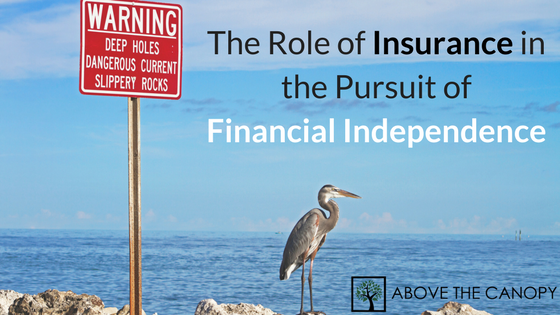Pacific Prime for Dummies
The Greatest Guide To Pacific Prime
Table of ContentsHow Pacific Prime can Save You Time, Stress, and Money.The smart Trick of Pacific Prime That Nobody is DiscussingNot known Facts About Pacific PrimeFacts About Pacific Prime RevealedPacific Prime Fundamentals Explained

This is due to the fact that the data were accumulated for a period of strong economic efficiency. Of the estimated 42 million people that were uninsured, almost about 420,000 (regarding 1 percent) were under 65 years old, the age at which most Americans become eligible for Medicare; 32 million were adults between ages 18 and 65, about 19 percent of all grownups in this age; and 10 million were youngsters under 18 years of age, regarding 13.9 percent of all youngsters (Mills, 2000).
These estimates of the variety of persons uninsured are created from the yearly March Supplement to the Existing Population Survey (CPS), performed by the Census Bureau. Unless otherwise kept in mind, nationwide estimates of people without medical insurance and percentages of the populace with various kinds of protection are based upon the CPS, one of the most widely used resource of estimates of insurance protection and uninsurance rates.
Pacific Prime Fundamentals Explained

Still, the CPS is particularly helpful because it produces yearly estimates relatively quickly, reporting the previous year's insurance policy protection approximates each September, and because it is the basis for a constant set of price quotes for even more than two decades, enabling for evaluation of patterns in protection in time. For these reasons, along with the considerable usage of the CPS in other research studies of insurance protection that exist in this record, we depend on CPS quotes, with limitations kept in mind.

The price quote of the number of without insurance people increases when a population's insurance policy condition is tracked for several years. Over a three-year duration starting early in 1993, 72 million people, 29 percent of the united state population, were without insurance coverage for a minimum of one month. Within a single year (1994 ), 53 million individuals experienced at the very least a month without coverage (Bennefield, 1998a)
Six out of every ten uninsured grownups are themselves utilized. Although working does boost the probability that one and one's member of the family will certainly have insurance policy, it is not a warranty. Even members of families with 2 full-time breadwinner have practically a one-in-ten chance of being without insurance (9.1 percent uninsured price) (Hoffman and Pohl, 2000).
Rumored Buzz on Pacific Prime
New immigrants make up a significant proportion of people without medical insurance. One analysis has associated a substantial portion of the current growth in the size of the U.S. uninsured populace to immigrants who showed up in the nation in between 1994 and 1998 (Camarota and Edwards, 2000). Current immigrants (those that involved the USA within the previous 4 years) do have a high price of being uninsured (46 percent), but they and their kids make up simply 6 percent of those without insurance coverage nationally (Holahan et al., 2001).
The relationship between health and wellness insurance coverage and accessibility to care is well developed, as recorded later on in this phase. The relationship in between health insurance coverage and health outcomes is neither straight neither easy, a comprehensive medical and wellness services research study literary works links health and wellness insurance protection to better accessibility to care, much better quality, and boosted personal and populace health condition.
Levels of analysis for taking a look at the effects of uninsurance. It concentrates specifically on those without any kind of wellness insurance policy for any length of time.
What Does Pacific Prime Mean?
The problems faced by the underinsured remain in some respects comparable to those encountered by the without insurance, although they are typically less serious. maternity insurance for expats. Uninsurance and underinsurance, nevertheless, include clearly various plan problems, and the methods for resolving them may vary. Throughout this research and the 5 reports to follow, the primary emphasis is on persons without medical insurance and therefore no help in paying for health care past what is readily available with charity and safeguard institutions
Health and wellness insurance coverage is a powerful variable impacting receipt of care due to the fact that both individuals and doctors react to the out-of-pocket rate of solutions - https://yoomark.com/content/we-are-award-winning-insurance-intermediary-choice-simplifying-world-insurance-help-you-find. Health and wellness insurance, nonetheless, is neither necessary nor sufficient to get to clinical solutions. The independent and direct effect of health and wellness insurance policy protection on access to health solutions is well developed.
Others will get the health and wellness treatment they require even without health insurance policy, by paying for it expense or seeking it from carriers try this website who use treatment free or at highly subsidized rates. For still others, medical insurance alone does not make sure invoice of care since of various other nonfinancial obstacles, such as a lack of healthcare suppliers in their community, limited accessibility to transportation, illiteracy, or linguistic and social differences.
The Greatest Guide To Pacific Prime
Official study regarding uninsured populations in the United States dates to the late 1920s and very early 1930s when the Board on the Price of Treatment produced a series of reports regarding funding medical professional workplace gos to and hospital stays. This concern came to be salient as the numbers of clinically indigent climbed throughout the Great Clinical depression.